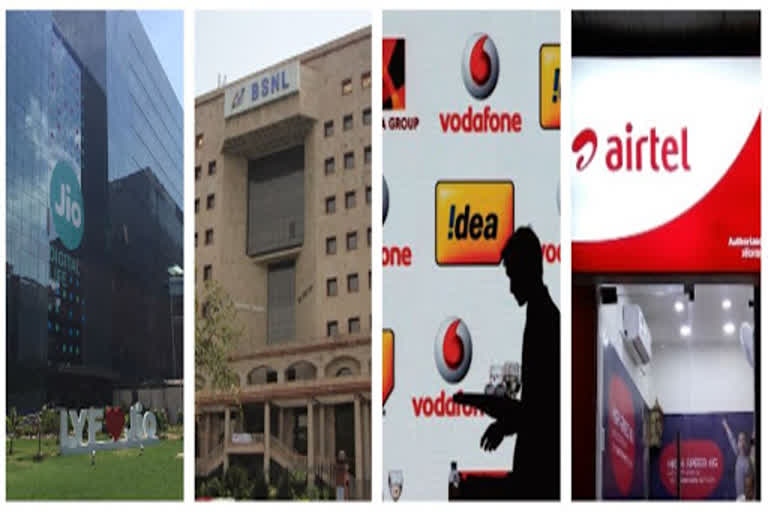Hyderabad: The telecommunications sector was one of the founding pillars of India’s development during the era of economic reforms.
The telecom sector accounts for 6.5 percent of India’s GDP and estimated to grow to 8.2 percent after the 5G revolution. But the latest ruling by the Supreme Court has pushed the telecom sector towards the brink of collapse.
In October 2019, the SC-mandated deadline of January 23rd asked the telecom companies to pay Rs 1.47 lakh crores.
A three-judge SC bench rejected an appeal by telecom companies against the October verdict.
The industry has filed a curative petition today given the fact that the companies are already bearing the brunt of 29-32 percent taxes and customs.
In a report submitted by the central government in July 2019; Airtel will have to pay up Rs.21,682 crores followed by Vodafone Rs.19,823 crores, Reliance Communications Rs.16,456 crores, MTNL Rs.2,537 crores and BSNL Rs.2,098 crores in the form of license fees.
The operators have agreed to pay Adjusted Gross Revenue (AGR) to the central government but disputed the definition of AGR given by the government.
When the telecom operators were in deep trouble and unable to pay the astronomical fixed license fees, the government offered a bailout as a part of the economic reforms.
But the recent Supreme Court judgment said that the companies which made huge gains did not report their correct revenues to the government.
Industry experts opined that operators like Vodafone might even shut shop amidst these circumstances.
The Vajpayee government of 1999 took some historic decisions to put the ailing telecom sector on the fast track.
This paved the way to the New Telecom Policy (NTP) whereby telecom companies would be charged one-time entry fee in addition to revenue sharing as against multi-year license fees.
The government reduced the 15 percent AGR to 8 percent in 2013. The combined revenue of the telecom operators which was Rs 4,855 crores in 2004 had increased to Rs 2,38,000 crores in 2015.
The government had specified the definition of AGR in its draft policy. The operators have agreed to the policy back then but took a U-turn recently. This is the reason for the current legal controversy.
With the advent of Jio offering 1GB data for Rs 8, other operators suffered 25 percent losses during 2017-19.
The per capita revenue which was Rs 174 in 2015 has dropped to Rs 113 recently. With these adverse conditions looming large, the debt of Rs 1,40,000 crore is pushing the sector towards disintegration.
With the recent advancements like 5G technology and AI, the right move must be made towards a win-win situation for the telecom operators and the central government.
According to the DoT website, there are 3,468 licensees across the country. After the government said that the SC order on AGR will be applicable to all non-telecom companies, the government sector organizations alone have a debt of about Rs 3 lakh crore.
Firms like PowerGrid get 95 percent of their revenue from power transmission and 2 percent from telecom services.
Though the corporation which earned Rs 742 crores through telecom services alone has to pay Rs 59 crores as a licensing fee, the current assessment put a liability of Rs 1.25 lakh crores on PowerGrid.
The state-owned gas utility GAIL India Ltd. also got a notice to pay up Rs 1.72 lakh crores. It is not yet clear if the SC would consider these state-run organizations’ pleas.
The central government deferred the payment of spectrum fees worth Rs 42,000 crores as it approved a two-year moratorium.
There is criticism that the distribution was not done right before the introduction of spectrum auctions.
Since the central government is earning exorbitant amounts in advance through spectrum auctions, the trade sources are against additional license fees.
At a time when the nation must be fully equipped for the 5G revolution, the current uncertainty in the telecom industry is not beneficial.
Read more: IMF cuts India's growth rate to 4.8%, calls it 'negative surprise'



